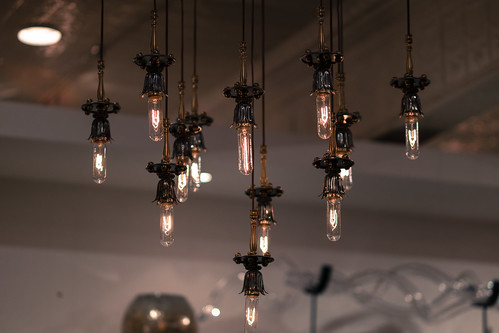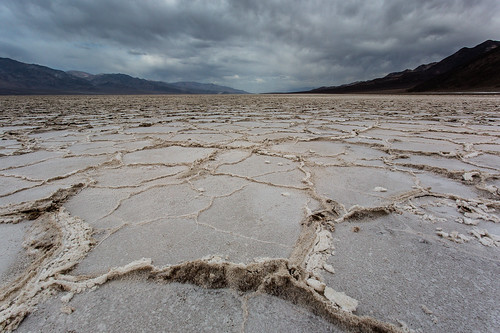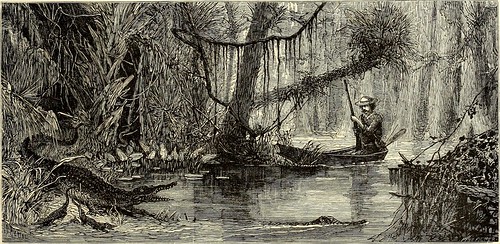
CRAFTED WITH CHARACTERS
A collection of our thoughts on whiskey, spirits
&
the world
Bottoms up: How fast should you finish that bottle of whiskey?
Over the months, we’ve chatted with more than a handful of whiskey drinkers who, in a quest to preserve their prized bottles of whiskey as long as possible, ask whether whiskey can go bad — or the converse, whether whiskey get better in the bottle? We thought we should weigh in.
In recent years, we’ve found the term “industrial chic” to be a telling turn of phrase - seemingly oxymoronic at first, and exemplary of the times. The two terms were, for generations, rarely uttered in the same breath. In the last decade, though, as developers have repurposed once-utilitarian factories into event halls and evening venues, they’ve chosen to preserve the features that builders originally included purely for efficiency purposes — like large windows “so that work floors could be flooded with natural light” before the advent of the electric light bulb.
Peeling paint? Keep it. A cracked and speckled concrete floor? Polish it and let its beauty shine. Rusting iron fixtures? Let them add character to events’ photos.
The Edison bulb is emblematic of the "industrial chic" aesthetic.
In the world of whiskey, you can see a derivative of this mentality in the focus on both age statements and spirits from mothballed distilleries like Port Ellen and Pappy Van Winkle.
In a word, today’s thirsty whiskey enthusiasts crave the same intangible as modern event-planners and soiree-hosts: authenticity.
Over the months, we’ve chatted with more than a handful of whiskey drinkers who, in a quest to preserve their prized bottles of whiskey as long as possible, ask whether whiskey can go bad — or the converse, whether whiskey get better in the bottle? We thought we should weigh in.
The theoretical dram who lives forever
As high as whiskey’s proof is, a well-sealed, unopened bottle of whiskey can last in its distiller-perfected state for decades if kept out of direct sunlight.
Even once opened, whiskey’s high proof renders it immune from most contaminants that render less stout beverages like milk and wine undrinkable a number of days after you’ve opened them. In other words, whiskey does not “go bad” in a traditional sense, even after you open the bottle.
However, as we’re all aware, whiskey is a social lubricant. As a volatile compound, it likes to interact with both its environment and the molecules in its vicinity. But these interactions are not always optimal. For example, ultraviolet light from direct sun exposure degrades the tannins that whiskey absorbs from spending time in oak.(1) Storage temperatures higher than around 70 degrees Fahrenheit likewise result in no good to whiskey. Perhaps the most transformative interaction, though, is whiskey’s tango with air.
Every time you open a bottle and pour a dram, you both raise the ratio of oxygen to whiskey in the bottle and allow the spirit and all its various compounds to mix with air.
Although oxygen is like the Lassie of elements to humans, it interacts with whiskey more like a frenemy. As the level of whisky in a bottle subsides in a delicious tide of Manhattans and neat pours, more oxygen fills the empty space in the bottle. The oxygen in the bottle reacts with a number of different compounds in the whiskey. Eventually, the oxygen succeeds in decreasing certain esters — or flavor compounds — of the whiskey, chiefly in the citrus and fruit categories. (Some refer to this as “oxidation”, similar to how rust forms in our repurposed industrial space from earlier, although this is not an entirely accurate statement.(2))
Unlike fruity esters that diminish over time, the phenol group vanillin increases in a bottle as time passes, yielding more vanilla notes. And in what must certainly qualify as the nerdiest of all reactions, oak lactones present in the whiskey due to its prior life in a cask (or a barrel) transform from spicy, incense-like aromas to coconut and vanilla aromas over time.(3)
To some who like more delicate drams, these changes in the bottle are a windfall. For others more interested in the wood and spice elements of whiskey, these are nothing short of a crestfall, somewhat like the notorious September Collapse of the 2011 Atlanta Braves.
The Ted in 2013. Starting 2017, the Braves will reside in a new park
Even more drastically, in the case of a faulty or improperly re-inserted cork, the whiskey can lose significant amounts of ethanol to evaporation. The result is a weaker and significantly less drinkable dram, like harsh brown water.
Whiskey consumption-speed guide
In light of this, we’ve put together a helpful guide for how quickly to consume your whiskey:
Unopened bottle — in 10 years (because an unopened bottle of whiskey is a universal tragedy)
Freshly opened bottle — in 2–3 years
Half-full bottle — in 1–2 years
Attempts to extend a bottle’s lifespan
Sometimes, it’s not quite practical to finish off a quarter bottle of whiskey in the recommended 3 month timeframe from above. In this case, fear not: you can preserve your whiskey by transferring it to a smaller bottle, one that provides as little headspace as possible between the level of the whiskey and the cork or screw cap.
As one final note in this quest to find the fountain of youth for whiskey, some drammers, in a bid to preserve whiskey like the best of oenophiles, take to storing a bottle of whiskey on its side. Unlike with wine, though, such a practice only ends in further distress for the dram-seeker. Because when you store whiskey on its side, the high-proof ethanol slowly erodes the cork — a flavor that doesn’t show up on a standard tasting wheel because it’s more or less gross.
All in all, once you open your prized bottle of Pappy, understand that the clock begins ticking. While in the short-term, the whiskey may take on favorable characteristics like an increased presence of vanilla, whiskey is ultimately a fickle minstrel, prone to losing its touch just as easily as it brought a smile to your lips. Consume it regularly, and it will always reward you. And in those rare instances where you face the imminent degradation of your dram, always feel free to invite over a merry band of pranksters to help you finish off the bottle. There are plenty more authentic brands on the shelves of your local liquor store taking a page from industrial spaces the world over and waiting patiently for your attention.
— — — — —
(1) A similar reason explains beer companies’ overwhelming choice of green and brown for bottles.
(2) “The interaction of [whiskey] with air is commonly called oxidation. This is a bit of a misconception because [whiskey] is not a homogenuous material like iron that can rust. It is a very complex mixture of many chemicals, some of which actually do oxidize and some of which are inert to the influence of oxygen.” http://www.dramming.com/2010/03/21/does-whisky-age-in-a-bottle/
(3) For all you AMC characters with the pseudonym Heisenberg, this is a conversion from trans-isomers to cis-isomers.
Whisk(e)y: Neat, with water, or on the rocks?
Imagine yourself cooking chili. You add meat and onions, then tomato. As a self-proclaimed Master Chili Chef, you naturally add salt to taste as the chili cooks. You sprinkle some salt into the pot, ladle some from the pot to taste, and decide it needs more salt. So you go to add a dash more salt and…the shaker’s top falls into the pot.
Imagine yourself cooking chili. You add meat and onions, then tomato. As a self-proclaimed Master Chili Chef, you naturally add salt to taste as the chili cooks. You sprinkle some salt into the pot, ladle a spoonful of the stew to taste, and decide it needs more salt. So you go to add a dash more salt and…the shaker’s top falls into the pot.
Salt cascades into the chili. Finally, you regain your wits and twist the salt shaker upright. But now, aside from this unfortunate scenario belying your claim to kitchen mastery, you’re faced with a conundrum: what to do with your overly salted chili?
This is too much salt for chili.
You consider throwing it out. But that would mean admitting to your spouse that you don’t actually know what you’re doing in the kitchen. So you decide to salvage it doing the only thing you know how: adding more ingredients.
To many starting their whisk(e)y journey, cask-strength expressions of 50%+ alcohol can trouble the palate like heavily-salted soup. (Of course, our Resident Salt Junkies, who will remain unnamed, might make the claim that soup can never be too salty.) One hundred twenty proof alcohol is just plain hot, the type of hot you find in south Georgia just shy of September.
Distillers know this, so absent the rare occasion of a cask strength release, they “proof down” or “cut” a spirit after pulling it out of casks (or barrels, depending on the size) to a less palate-eviscerating 80, 86, or 90 proof. This is the strength of the whisk(e)y when it joins fellow bottles in your home bar. [Note: we'll just use the term "whiskey" from here on out, as is the common usage in our jurisdiction.]
But now, just like with your chili, you must decide whether to add something to the whiskey to achieve tippling harmony - in this case, water.
As with many things in the lives of barristers, businessmen, and bourbon-makers, the answer is: It Depends. In this case, it depends on what your goal is.
With water
Adding a few drops of water to your whiskey breaks the surface tension that binds the whiskey molecules. The ensuing chemical reactions generate heat, which unlocks more aromas lying dormant in the whiskey. Spirits judges the world over proof down whiskies for this very reason — to fully evaluate a spirit’s varied aromas.
Some folks claim that you should proof down whiskey only with water from the distillery's own water source. However, this is not only impractical, but also a step that many world-renowned Scotch distilleries focused on achieving economies of scale(1) forgo in favor of diluting to bottle strength with water not from their distillery's local water source, but from Edinburgh or Glasgow.
So if you do decide to add water to experience the full gamut of sensory aspects a whiskey can provide, ignore this notion that only the distillery's water will do. and feel free add a few drops from any bottled or well-filtered water, preferably after tasting it neat.
Neat
Many whiskey enthusiasts, including at least one amongst our ranks, view the addition of water as roughly equivalent to rubbing Behr paint on a Rembrandt. The thinking here is that, without water, “you are tasting it in the natural form with all of the original distillery characteristics and flavors.” Source.
Behr paint would not augment this Rembrandt in acceptable fashion.
This first point is fair. But some take the argument a step further and claim that whatever proof a distillery bottles a spirit at is the proof it has determined as the strength at which you’ll best enjoy the spirit. While there may be some validity to this claim, in practice, a distillery may find that 48.4% is the ideal proof at which to enjoy a particular whiskey, but will instead bottle at a round number to simplify bottling.
So if you want to enjoy the whiskey in its original state, feel free to do so by drinking it neat; just avoid the claim that whatever proof the distillery bottles the spirit at is the singly perfect proof for the spirit.
On the rocks
Some whiskey enthusiasts — especially ones who live in regions that some might describe as “subtropical” and others might describe as “swamp-like” — find their shirts coagulating with moisture during the summer months. In these tepid times, we’ll occasionally turn to the wonders of the nineteenth-century innovation known as “ice”, first harvested in 1806 by the enterprising New Englander, Frederic Tutor.
South Georgia today not so very different than this woodcut.
Although ice actually suppresses the aromas (or nose) of whiskey, when your A/C unit goes out during a heatwave and you find yourself laboring away over a pot of soup, there’s little more you can do.
So when you do find yourself looking to place ice in your whiskey to cool down during a heatwave, do so with large cubes like these that melt slower while still chilling your tipple.
Our approaches
All in all, we typically find that well-made spirits do reveal a different complexion once we add a few drops of water. So, when we’re really trying to evaluate spirits, we first inhale the whiskey aromas at bottle proof in a few, quick sniffs, let the spirit rest, then take deeper breaths. Once we’ve done this, we often add a drop or two of water to let the spirit open up and repeat the process. If the whiskey is still quite hot, we might undergo this process once or twice again.
But we always do so gradually. Because —similar to the case of chili, which requires proportionally more ingredients once you’ve skillfully over-salted it—if you add too much water to whiskey from the outset, you’re left with the very real dilemma of adding more whiskey to regain the dram’s harmony. Of course, this is only a problem when we’re evaluating spirits for consistency. When we’re evaluating spirits for clarity on the great mysteries of life, adding more whiskey to a glass is generally a solution.
— — — — —
(1) As the Birthplace of Economics, it makes sense that Scotland has given birth to distilleries that favor one of the linchpins of modern economics: economies of scale.





 This is too much salt for a pot of chili.
This is too much salt for a pot of chili. Behr paint would not augment this Rembrandt in acceptable fashion.
Behr paint would not augment this Rembrandt in acceptable fashion. South Georgia today is not so very different than this woodcut.
South Georgia today is not so very different than this woodcut.